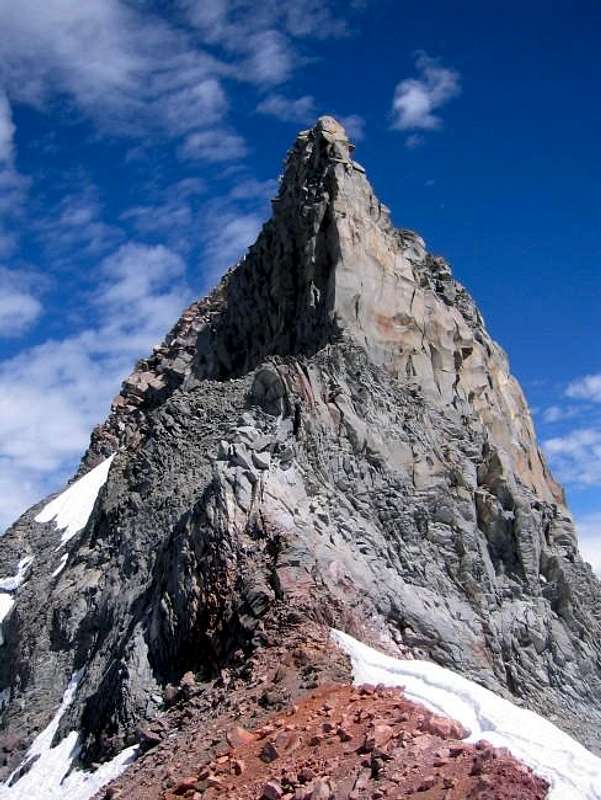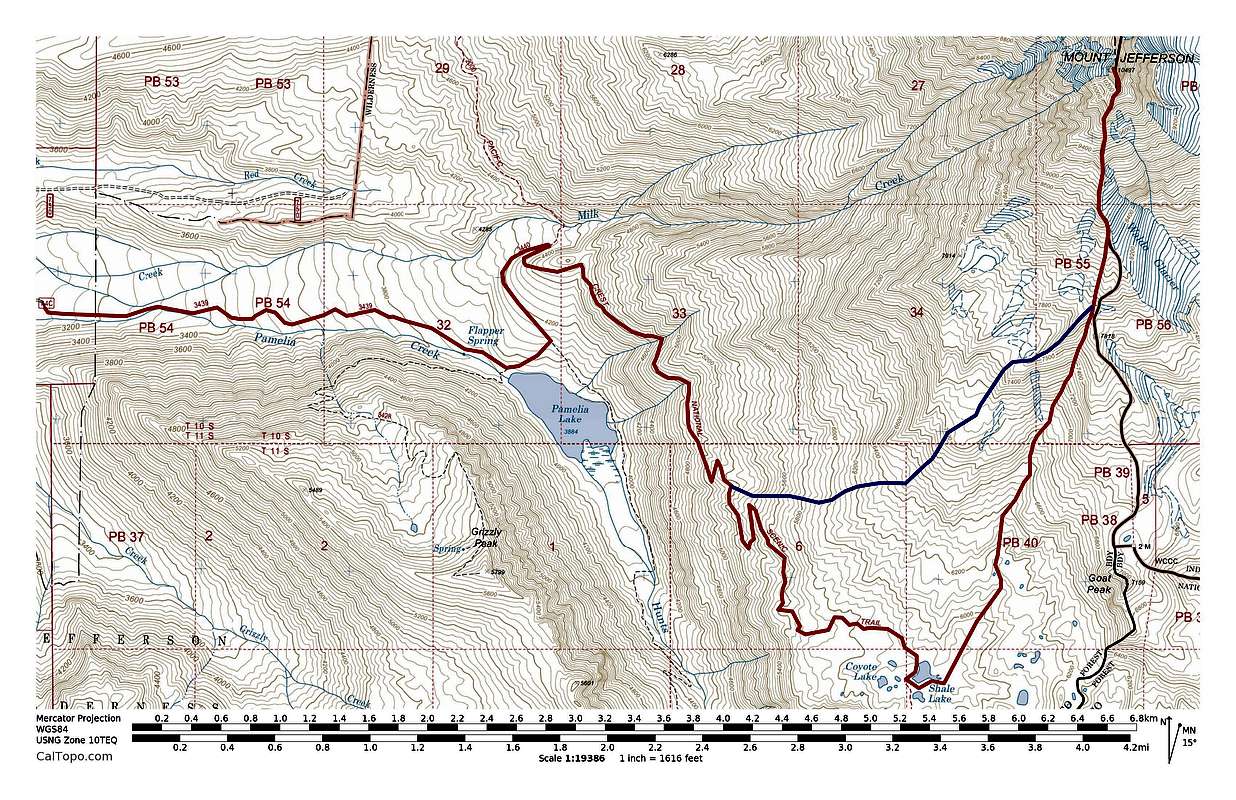-
 36755 Hits
36755 Hits
-
 72.08% Score
72.08% Score
-
 2 Votes
2 Votes
|
|
Route |
|---|---|
|
|
44.67440°N / 121.7978°W |
|
|
Mountaineering, Scrambling |
|
|
A few days |
|
|
Class 4 |
|
|
Fourth Class Scramble |
|
|
2 |
|
|
Overview
The South Ridge route was perhaps the route followed by Mount Jefferson's first ascent party in 1888. Today, the South Ridge route is one of two common routes on Mount Jefferson that avoid glacier travel. The other common route on Mount Jefferson that avoids glacier travel is the Southwest Ridge route. These two routes originate from the Pamelia Lake Trailhead, diverge at ~5,200' along the Pacific Crest Trail & reconvene at ~7,900' on Jefferson's long, south ridge. The Southwest Ridge route is likely your best option if you are attempting to daytrip Mount Jefferson. If you are planning to spend at least one night one the mountain, then the South Ridge route is likely your better option as camping along the Southwest Ridge route beyond Pamelia Lake is not advisable due to a lack of water source. However, Shale Lake along the South Ridge route provides an excellent campsite with plentiful water.Vertical Gain: ~7,800'
Roundtrip Distance: ~23 miles




